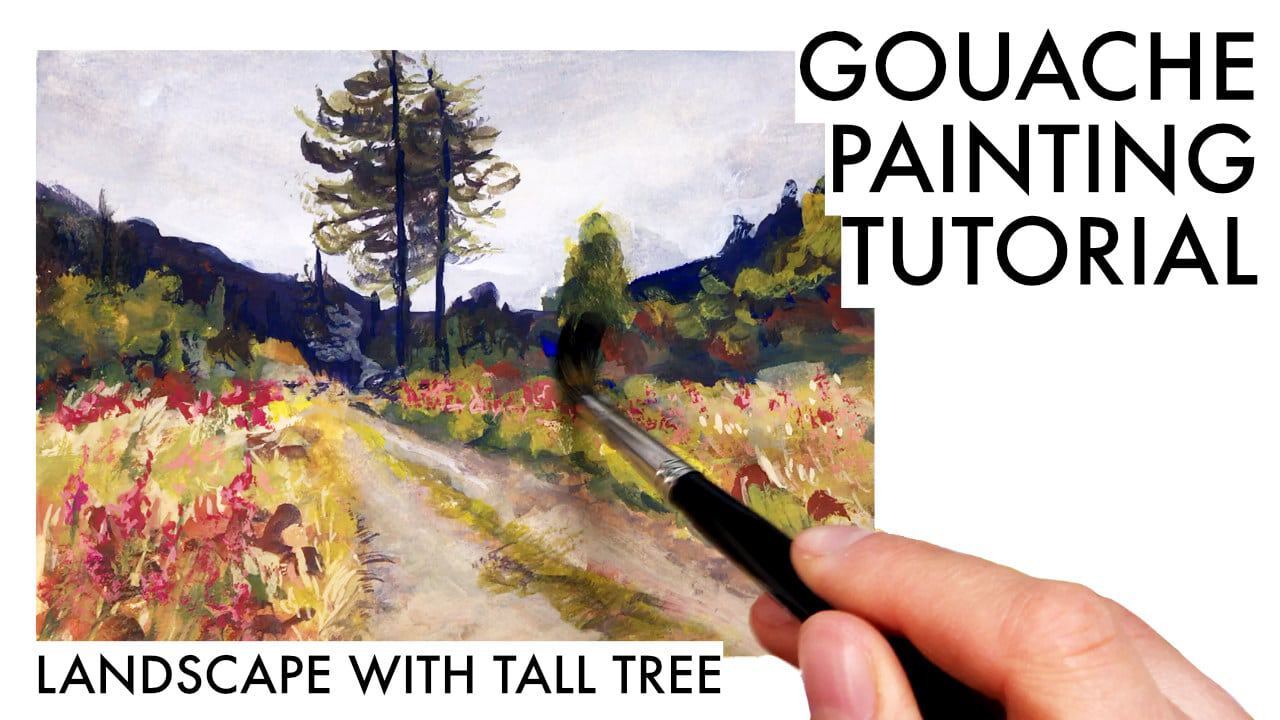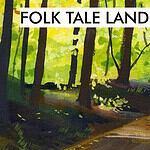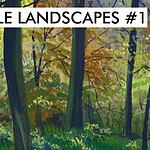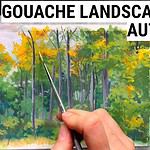Here’s another gouache landscape tutorial for you. I’ve recorded this video quite a while ago (before the summer started), so I’d probably do a few things different now – I’d spend less times with individual brush strokes and focus more on the simplification of the entire scene. It’s still a good video to learn from, particularly things like composition, the stages of a gouache sketch (from thin underpainting to thicker paint layers), and how to achieve interesting textures with different brush strokes.
This is one of the types of landscape that will more or less disappear from Germany in the next 20 years. All of the dark stuff I painted in the background, and the two tall trees in the center are spruces.
Spruce monocultures can’t handle long periods of dry, hot weather without any rain – and this seems to be our new summer now, and often spring and autumn, too. These forests are a feast for the bark beetles. So climate change means that our forests are changing a lot. The hope is that deciduous trees can handle the dryness better, so the current approach is to bring back the mixed forests that once covered a lot of Middle Europe. Of course this will take decades.
This effect of dying spruce forests has been going on for a few years now, and hiking these days often means passing vast areas of dead or fallen trees, a lot of them waiting to be transported away. In the foreground of my painting you can see an area where deciduous trees and bushes (painted in warmer greens) are already filling up the gaps, making it seem less of an apocalyptic ghost forest. Nature will almost always adapt and recover over time, but it’s still hard to see the effects we have directly caused.
Anyway, I hope you enjoy the painting tutorial of this kind of disappearing landscape.
Landscape with a tall tree – gouache tutorial
How’s the situation in your local forests? Can you already see any traces of climate change in your area?






Currently many forest and mountain areas in California, USA are having some of the largest wildfires in the world. They are still burning, and the air quality in California is bad with the smoke. Much of the cause is also the bark beetle infestation, and we see huge areas of dead pines, spruce and fir trees. With climate change our summers are also getting longer and hotter. Its all very depressing.
I’ve heard about the wildfires in California, this even reached our news here. What I didn’t know that this this also stems from the bark beetles. I imagine with your already rather warm climate this is a devastating situation.
Thankfully Canada still has lots of trees but climate change is making wildfires bigger, hotter and more dangerous. Especially in the boreal forests, wildfires are an integral part of the ecosystem but with drier summers becoming more usual in places, recent fires are burning differently and the top peat layers in forests are often burned completely. There is concern that reforestation may continue differently than in the past. I remember extreme forest fires in the Great Slave Lake region in the Northwest Territories a few summers back and how those fires smouldered underground for months after. Changes in forest disturbances due to warming climate may result in more tree deaths and changes in tree relationships in their ecosystem: insects, drought, extreme storms, invasive species, wildfires. My mother used to recite a poem to me about trees and I often hear one stanza in my head as I walk through woods: “I think I shall never see / A poem lovely as a tree / For poems are made by fools like me / but only God can make a tree.”
I didn’t know about wildfires of that extent in Canada. That poem is beautiful and it’s good to have something to smile about while reading through all of these comments. Thank you for quoting it Susan!
The forests in my area are being clear-cut to make “wood pellets” that are shipped to Europe so that the countries there can pretend to have clean, green, renewable, carbon-neutral energy. Hundreds of thousands of acres in my region are disappearing. They are not replanted. Anyway they will take 40years to grow back. It is not green energy and it is a catastrophe for the climate since these forests are (1) no longer capturing carbon because the no longer exist, and (2) the carbon in these forests is released when they are burnt in power plants to make “GREEN” electricity for Europe. Meanwhile our birds have nowhere to go and continue to extinction — one- third of all our birds are GONE already.
I live in North Carolina, USA (southeast U.S.)
This is awful Betsy. I have no idea which lobbyist made the EU declare that wood pellets are clean energy – they’re definitely not. Heating with wood creates huge problems with fine dust in the air (causing health and weather issues), and as you state the carbon emissions from the wood don’t help the climate either. This technology has to go immediately, like coal. Sadly people like to believe their comfy fireplace is heated with natural wood which surely can’t be bad, plus you get government funds for it.